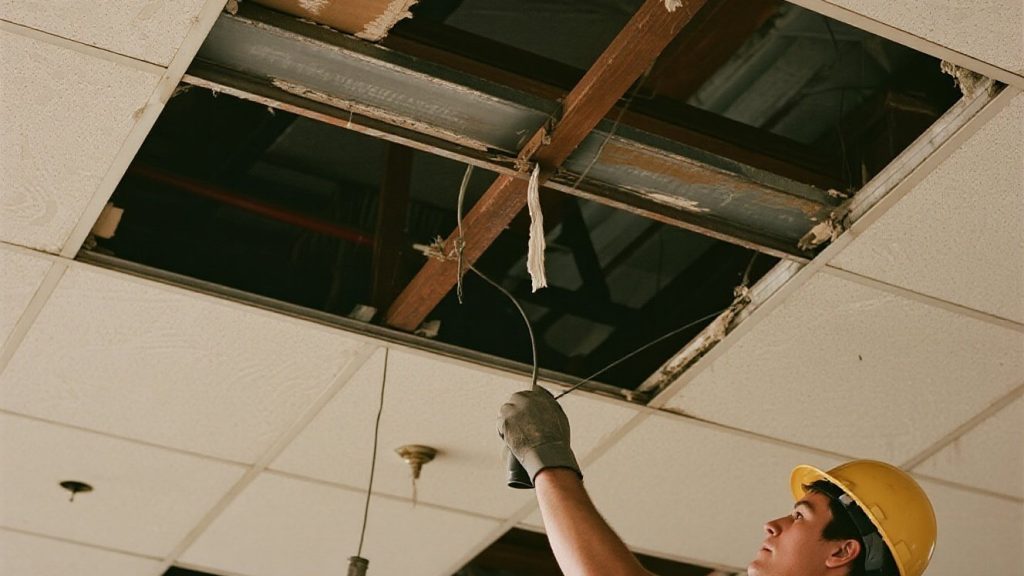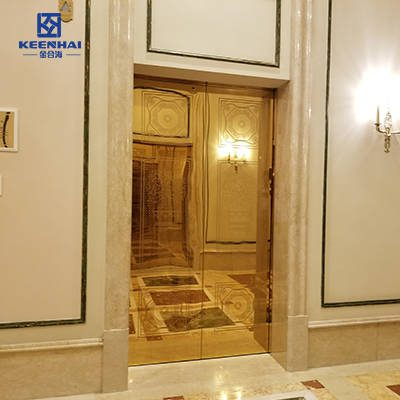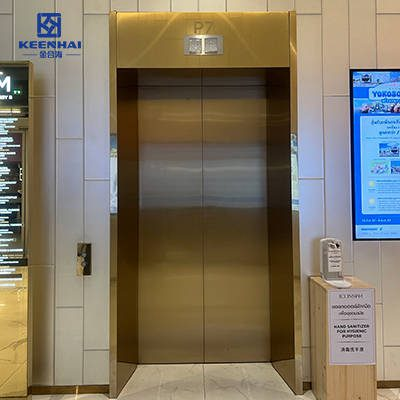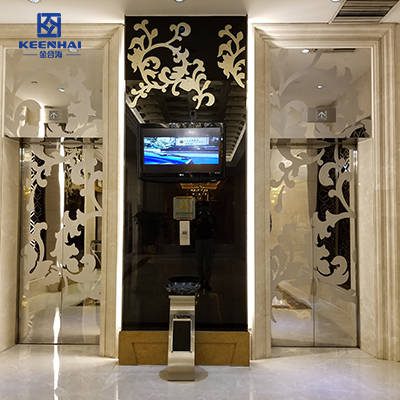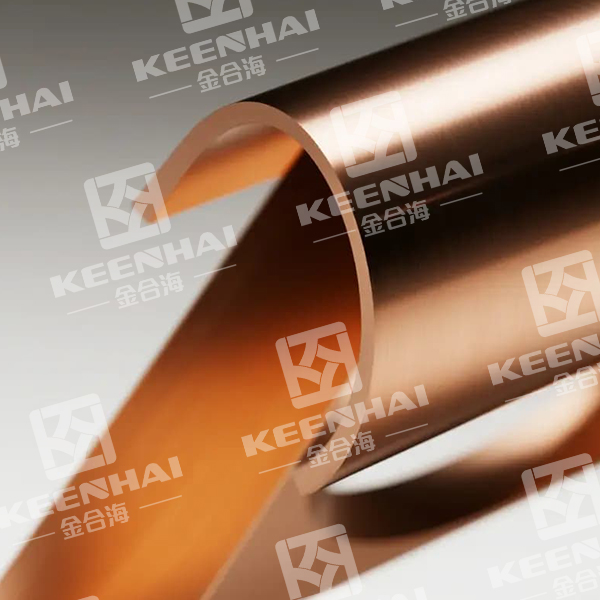Metal ceilings are prized for their durability, sleek aesthetics, and low maintenance, making them a popular choice in commercial spaces, offices, retail stores, and even modern homes. With proper care, they can last 20–50 years, depending on the material (aluminum, steel, or copper) and environmental conditions. However, no ceiling lasts forever. Recognizing early warning signs of deterioration can help you address issues before they escalate into costly repairs or safety hazards. Below is a guide to identifying when your metal ceiling needs replacement, along with key considerations before taking action.
Key Signs Your Metal Ceiling Requires Replacement
1. Severe Corrosion or Rust
Corrosion is the most common enemy of metal ceilings, especially in humid environments (e.g., kitchens, bathrooms, or coastal areas) or spaces with poor ventilation.
- What to look for:
- Red, flaky rust on steel ceilings (indicates the protective coating has failed).
- White, powdery deposits (oxidation) on aluminum ceilings, which weaken the metal over time.
- Pitting or holes in the metal, where corrosion has eaten through the surface.
- Why it matters: Small rust spots can spread quickly, compromising the ceiling’s structural integrity. Left unaddressed, corrosion can lead to sagging panels or even collapse in extreme cases.
2. Sagging or Warped Panels
Metal ceilings are designed to remain flat and rigid, supported by a framework of rails or joists. Sagging or warping is a clear sign of structural failure.
- What to look for:
- Panels that dip in the middle or pull away from their fasteners.
- Visible gaps between panels, or panels that no longer align with the ceiling grid.
- Bowing along the edges of panels, especially in areas exposed to moisture or temperature fluctuations.
- Why it matters: Sagging panels are at risk of falling, posing safety risks. Warping can also trap moisture between panels, accelerating corrosion.
3. Persistent Water Damage
Leaks from roofs, plumbing, or HVAC systems can wreak havoc on metal ceilings, even if the source of the leak is fixed.
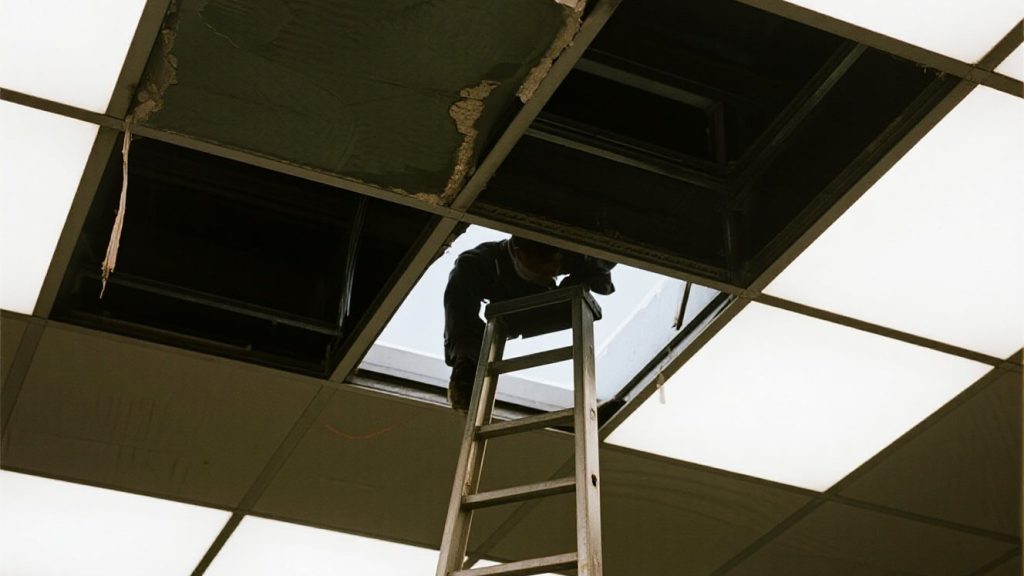
- What to look for:
- Stained or discolored panels (e.g., yellow or brown spots from water runoff).
- Mold or mildew growth on or behind panels, which thrives in damp, dark spaces.
- Softened or weakened metal around seams, where water has seeped into joints.
- Why it matters: Water damage weakens the metal’s structural integrity and creates health hazards (mold spores can trigger allergies or respiratory issues). Even after fixing the leak, damaged panels often cannot be fully restored.
4. Damaged or Missing Fasteners
Metal ceilings rely on screws, clips, or rivets to stay securely attached to their framework. Loose or missing fasteners are a red flag.
- What to look for:
- Panels that rattle or shift when touched or exposed to air flow (e.g., from fans or open windows).
- Visible gaps where fasteners have pulled out, or rusted fasteners that no longer grip the metal.
- Panels hanging at an angle, supported by only a few remaining fasteners.
- Why it matters: Loose panels are unstable and can detach unexpectedly, endangering anyone below. Damaged fasteners also allow moisture to seep behind the ceiling, worsening corrosion.
5. Faded or Peeling Finishes
While cosmetic issues alone may not require full replacement, severe finish degradation can signal underlying problems.
- What to look for:
- Powder coatings or paint that is chipping, peeling, or flaking off, exposing bare metal.
- Faded colors (especially in ceilings exposed to direct sunlight, such as those in atriums or skylights).
- Stains that cannot be removed with cleaning, even after multiple attempts.
- Why it matters: A compromised finish leaves the metal vulnerable to corrosion. In commercial spaces, a worn appearance can also harm brand image or customer perception.

6. Excessive Noise or Poor Acoustics
Metal ceilings often include acoustic backing to reduce echo, but over time, this backing can deteriorate.
- What to look for:
- Increased noise transmission (e.g., voices or footsteps from upper floors sounding louder than usual).
- Rattling or vibrating panels that amplify sound, especially in high-traffic areas.
- Visible damage to acoustic tiles or insulation behind perforated metal panels.
- Why it matters: Poor acoustics can disrupt productivity in offices or comfort in retail/hospitality settings. In extreme cases, loose panels may vibrate so violently that they worsen structural damage.
What to Consider Before Replacing Your Metal Ceiling
If you notice any of the signs above, replacement may be necessary. Before starting the project, keep these factors in mind:
1. Material Lifespan
Different metals have varying lifespans, which can help you gauge if replacement is overdue:
- Aluminum: 20–30 years (resists corrosion but may warp in extreme heat).
- Steel (galvanized): 30–40 years (zinc coating delays rust but can wear thin over time).
- Copper: 40–50+ years (develops a protective patina but is more expensive).
If your ceiling is approaching or exceeding these ranges, proactive replacement can prevent emergencies.
2. Cost vs. Repair
Minor issues (e.g., a few rust spots or loose fasteners) can often be repaired. However, if damage is widespread (e.g., 30%+ of panels are corroded or warped), replacement is more cost-effective than repeated repairs.
| Scenario | Repair Feasible? | Why? |
|---|---|---|
| Small rust spots (1–2 panels) | Yes | Sand, treat with rust inhibitor, and repaint. |
| Sagging panels (5+ panels) | No | Warped panels are structurally compromised; replacement avoids collapse. |
| Mold from leaks (localized) | Maybe | Clean mold and fix the leak, but replace panels if metal is weakened. |
| Faded finish (entire ceiling) | No | Refinishing large areas is labor-intensive and may not match old panels. |
3. Environmental Factors
If your ceiling is in a high-moisture or high-traffic area, choose a more durable material for replacement:
- Coastal or humid spaces: Opt for aluminum (naturally corrosion-resistant) or stainless steel.
- Industrial areas (chemical exposure): Choose galvanized steel or aluminum with a PVDF coating (resists chemicals).
- High-traffic zones (e.g., lobbies): Steel panels with a powder-coated finish (scratch-resistant).
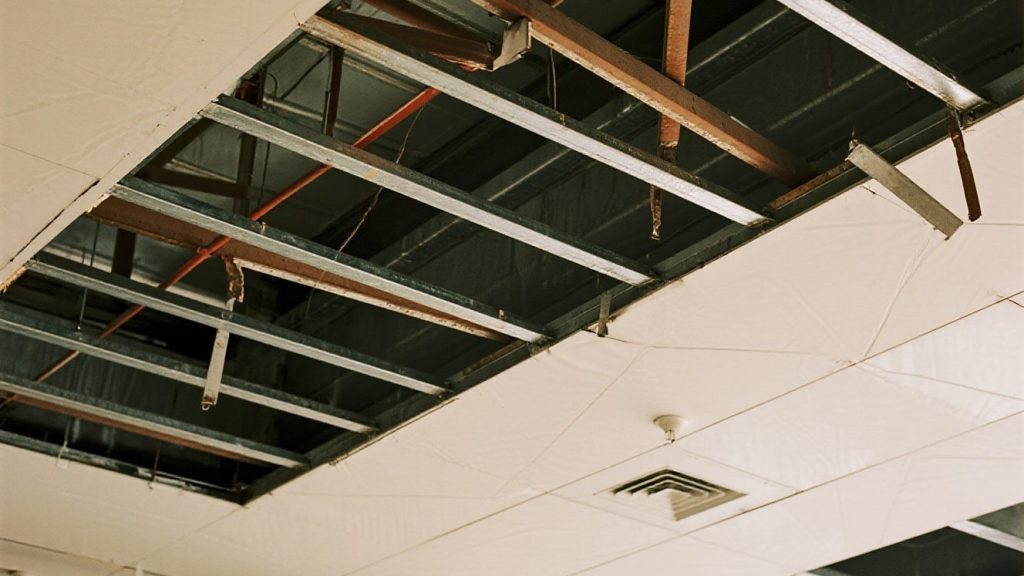
4. Energy Efficiency and Upgrades
Replacing your ceiling is an opportunity to improve insulation or add energy-saving features:
- Integrate acoustic insulation to enhance soundproofing.
- Choose reflective metal panels (e.g., aluminum) to reduce heat absorption, lowering HVAC costs.
- Add LED lighting fixtures during installation to modernize the space.
5. Professional Inspection
A licensed contractor can assess hidden damage (e.g., corrosion behind panels or weakened framework) that may not be visible to the naked eye. They can also ensure compliance with building codes (e.g., fire safety standards for commercial spaces).
Konkludo
A metal ceiling is a long-term investment, but recognizing signs of deterioration—corrosion, sagging, water damage, or finish failure—can save you from safety risks and costly repairs. By evaluating the extent of damage, considering material lifespans, and planning for upgrades, you can replace your ceiling proactively, ensuring it remains functional, safe, and visually appealing for decades to come. When in doubt, consult a professional to guide your decision and ensure a seamless replacement process.

